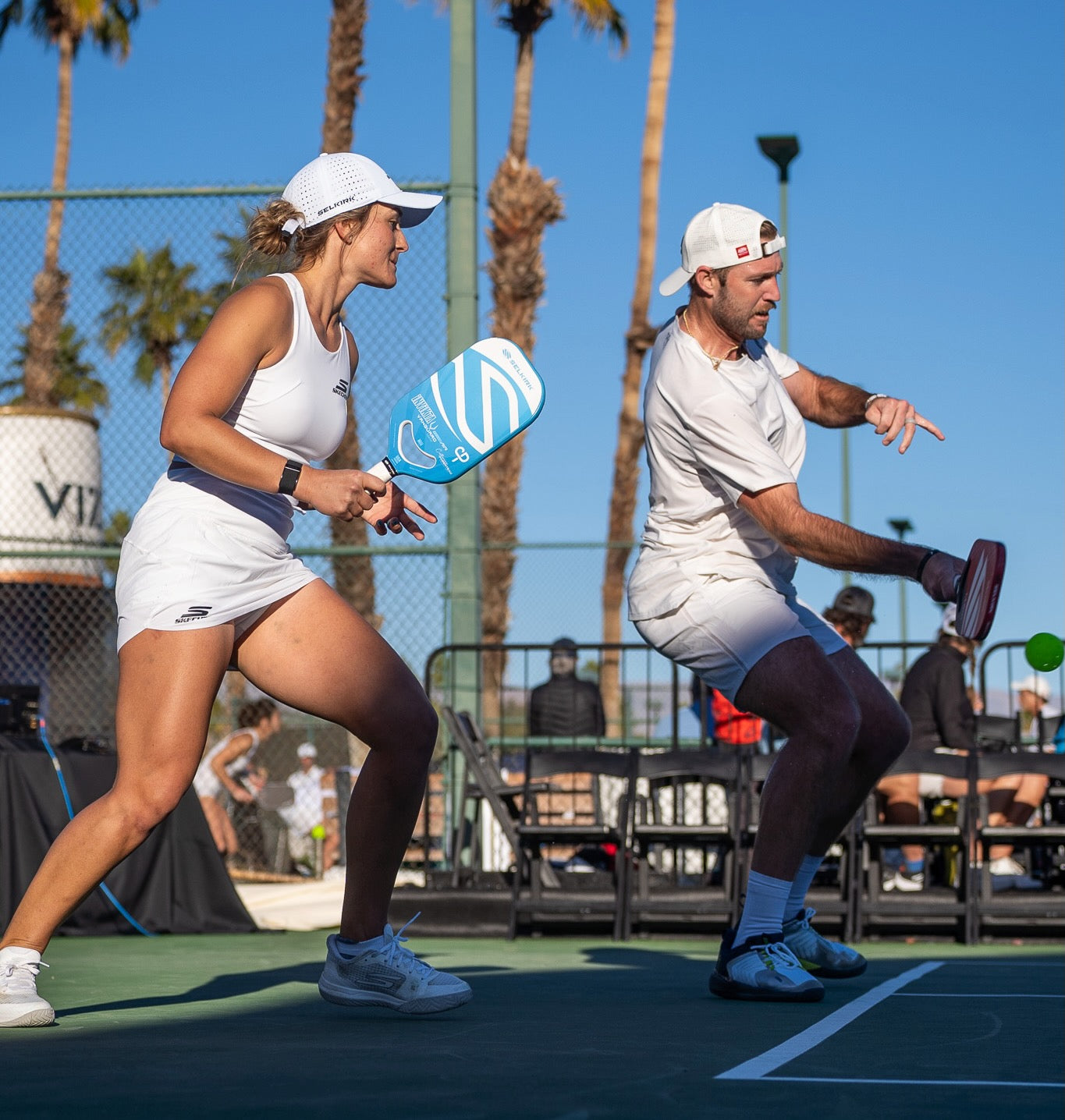
As with any sport, most pickleball players have a preferred position on the court. Just as a baseball pitcher has differing skills to an outfielder, so too, do right-side and left-side pickleball players.
Generally speaking, right-side players prefer using control and finesse to set up points while left-side players are aggressive and use powerful shots to win points.
To avoid feeling discomfort when switching positions on every successful point, you and your partner can consider implementing stacking. This tactic ensures that right-side specialists stay on the right side of the court, while the traditionally more aggressive player stays on the left.
What is stacking in pickleball?
Stacking in pickleball refers to strategic placement used by doubles teams during matches, primarily aimed at optimizing player positioning.
Both players on a team line up — or stack — on the same side of the court, before a serve or return. After the ball is struck, the team can quickly move to their preferred side of the court.
This tactic allows teams to leverage each player’s strengths on every play, rather than switching sides after each point. Advanced players (rated 4.0 and above) often use stacking as it introduces a strategic complexity that can be challenging for beginners to counter.
The benefits of stacking in competitive pickleball
The main benefit of stacking is that a team can always highlight its strengths by staying in the preferred position.
For example, a right-handed player with a powerful forehand will likely prefer to stay on the left side of the court because doing so allows them to keep their forehand in the middle. Likewise, a right-handed player who prefers their backhand will prefer the right side of the court so their backhand is in the middle.
This tactic is also particularly advantageous for teams consisting of a left-handed player and a right-handed player because it allows the team to keep both forehands in the middle of the court.
And while stacking is most beneficial for highlighting strengths, it can also be used to compensate for a weakness. For example, if a right-handed player does not have a backhand shot, it may be beneficial to position them on the left side of the court where their backhand will be used less frequently.
How to stack in pickleball
Stacking during a match can be done both as the serving team and the receiving team, though there are different tactics for each.
Stacking when serving
Stacking as the serving team is easy. Pretend it’s your partner’s turn to serve from the right side of the court, but that’s your preferred side of the court.
Your partner will take their serving position on the right side of the court as normal. You will stand to their right, near the sideline.
After your partner has served, you each slide to your left and prepare to receive your opponent’s return. Then, play the point as normal.
Stacking when receiving the ball
Stacking as the receiving team is a little more difficult as it requires more coordination between you and your partner to ensure you aren’t leaving a lot of the court vulnerable to attack.
Let’s say it’s your partner’s turn to receive the ball on the right side of the court, but you want to play on the right side. You have two options.
The first is to be obvious about your stacking. Your partner will head to the baseline on the right side of the court to receive the ball. You will stand at the kitchen line just outside the right sideline. After your partner hits the return, you will both run to your preferred sides.
Although this tactic can be effective, it also telegraphs to your opponents that you are going to stack. They will then know that left side of the court will be open for an extended amount of time and may aim their return there, making it more difficult for you and your partner to get set at the kitchen line.
The second option is to set up as you would without stacking, so your partner would head to the baseline of the right side of the court while you stand at the kitchen line of the left side of the court.
From here, you will signal to your partner whether you want to stack or not. Typically, players at the kitchen line will put one hand behind their back and signal the following: An open hand, meaning stack, or a closed fist, meaning stay as you are.
If your partner verbally agrees to stack, you will wait for them to hit the return before sliding to your right. Remember that as you do, your partner is traveling cross-court, so you will need to cover the middle until they make it to the kitchen.
Stacking is a game-changer
Stacking is a powerful strategy in doubles pickleball that, if executed correctly, can significantly enhance your game.
For beginners, it may require some practice to master the timing and movements involved. However, with patience and consistent practice, mastering stacking can provide a substantial strategic advantage in competitive play.







